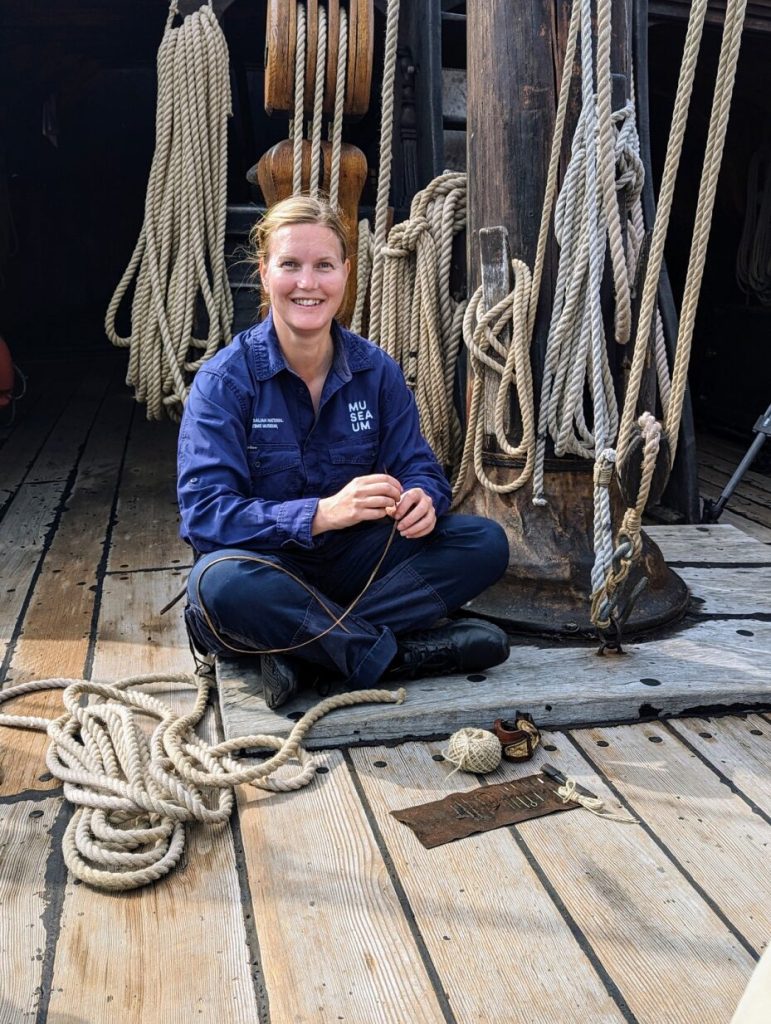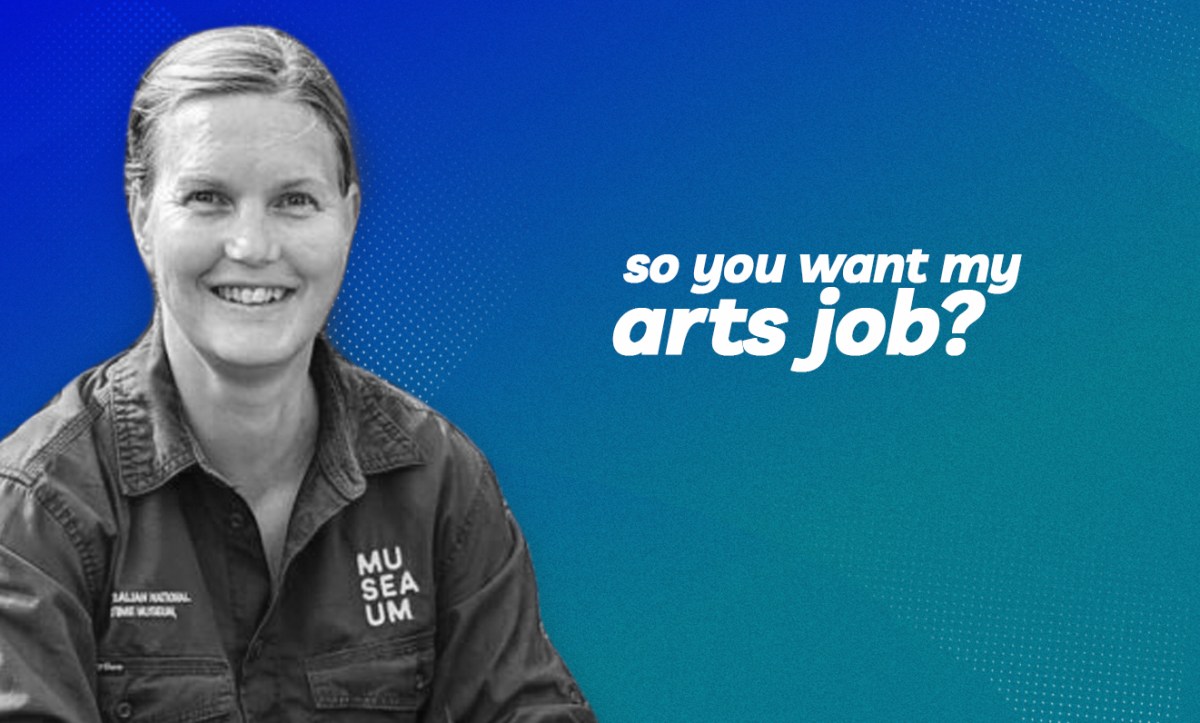The Australian National Maritime Museum is among a small number of specialist maritime museums around the world, including a handful in the UK. These museums are home to collections that centre on all things nautical, with some taking that to a wider environmental lens to the sea. Among those collected objects, some may be as small as a shackle from a historic boat, to the very boat itself. The Sydney-based museum holds 12 vessels within its fleet, making it one of the largest floating historical vessel collections in the world.
Many of those vessels are active working “exhibits”, including a replica of the tall ship the Duyfken, which celebrated her 25th anniversary in January. Together, a team of shipwrights maintain or conserve the ships.
One specialist arts job, which straddles conservation and the visitor services office, is Shipkeeper. ArtsHub catches up with Mirjam Hilgeman, who is Museum Shipkeeper for the Duyfken, to help us demystify this unusual role.
How would you describe what you do to a non-arts friend?
I work on a 16th century replica vessel, called Duyfken at the Australian National Maritime Museum (ANMM). In a nutshell, the work I do on board is a large variety of tasks. Mainly I’m looking after the vessel on a day-to-day basis, [performing] maintenance, assisting the guiding volunteers to my best ability, overseeing the training aspects of the volunteer crew and the “running of the deck” when sailing.
What qualifications do you need for this job?
I have no formal qualifications as such, just 15 years’ hands-on experience.
How did you get your start in this career?
It was not a planned adventure. I started out as a visitor on board, and I was asked by the tour guide (after showing interest and about 100 questions later) to become a maintenance volunteer in 2009. This was meant to be for two weeks. It became a bit longer. Since 2009 I have been involved with the vessel daily, and in 2021 I became a paid Shipkeeper for the vessel, when it became part of the ANMM Collection, and I am still working for her.
How collaborative is this job?
In this job I need to work together with different teams here at the Museum, including volunteers, members of the public and contractors.
What’s the most common misconception about your job?
Maybe people think it is easy, and that I just relax on board. While in real life, I hardly sit down to have a lunch break.
How competitive is this job?
There are only a few people who can call themselves Shipkeepers. It’s a labour of love for a vessel. Most Shipkeepers have been with “their” vessel for many years.

In an interview for your job, what skills or qualities would you be looking for?
People skills – you are dealing with volunteers and members of the public every day, so people skills are number one. Secondly, you need to be handy and willing to tackle the challenges that the vessel gives you. Nothing is ever easily done. There is the easy way, the hard way and the Duyfken way.
What’s an average week like?
My week starts on a Tuesday and ends Saturday night. During the week there are a lot of things going on, and I always have to think on my feet and be flexible. Any issues regarding the vessels (not only Duyfken, but any vessel that is on Museum grounds), or to do with volunteering, members and the public need to be dealt with as quickly as possible.
Apart from the general tasks of maintenance of the vessel, as Shipkeeper I am responsible for overseeing the training of our volunteers, supporting the guiding volunteers in their needs, and filling in when needed, as well as organising sailing crew and making manifests. Sharing knowledge, historical, nautical and practical skills is a key part of my job that I love.
Every Friday and Saturday we sail Duyfken on Sydney Harbour with passengers, which requires a different set of skills. Overall it is a very diverse week, which is part practical, part administrative and part visitor engagement.
Read: So you want my arts job: Design and Colour Consultant
What about gender balance and diversity in your industry?
We have a lot of diversity and people from all genders in our industry. While historically there are largely more men in shipkeeping, a person’s gender doesn’t matter, rather just that you do justice to the vessel and the job you get paid for.
What’s the weirdest thing that’s happened to you in this job?
There are so many things that are “normal” when you are living and working on a tall ship that other people may find weird. Like washing your sheets in the rubbish bucket, as it’s the biggest bucket on board, or going on a mission at 2am to find the loose block that is tapping and creating noises, or seeing the bioluminescence (glowing algae) at sea at nighttime.
I suppose the weirdest thing would be the light flash that lit up the whole sky with no explanation of what it could be. We were sailing on Duyfken between Darwin and Port Hedland in August 2012. We were 80 nautical miles offshore. We had the night, 12 to 4am, shift. Out of nowhere there was a bright flash that lit up the whole sky for a good second and then the darkness was back. For the next few days there were no planes, no other vessels and we were wondering if something had happened on the Australian mainland. As you are out at sea, there is no phone connection, no internet. No way to get news other than through radio calls. When the Sea Patrol plane came over it was reassuring that everything was still as it should be. (This still remains a mystery.)
Learn how you can book your experience on the Duyfken.





